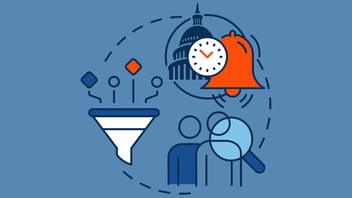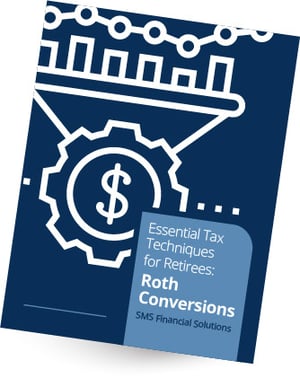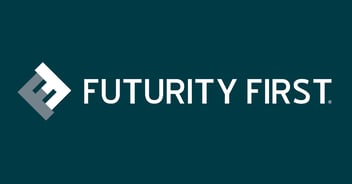
Milestone Secure Act 2.0 Is Major Boost for Your Clients' Retirement – And Your Career

Big changes – and big opportunities – are ahead for retirement savers and the insurance and retirement planning professionals who help them.
President Joe Biden on Dec. 29, 2022, signed into law the sweeping retirement reform known as the Setting Every Community Up for Retirement Enhancement (Secure) 2.0 Act of 2022, which was included in the Consolidated Appropriations Act, 2023, the federal spending bill. Widely lauded for encouraging retirement savings, Secure 2.0 includes major changes to the retirement planning landscape, from raising the RMD age to broadening the appeal of Roth IRAs.
“Agents and advisors really need to implement these changes into their retirement planning process,” said Bill Kauffman, Vice President, Financial Solutions, at Senior Market Sales® (SMS). “Doing so will enable them to both educate their clients and prospects on changes and offer guidance on possible revisions to their retirement plans. SMS will keep agents and advisors informed and provide the best service, advice and tools so they can seize these opportunities for growing their businesses and for better preparing clients for retirement.”
Secure 2.0 builds on the Secure Act of 2019 and includes dozens of provisions – some effective immediately and others over the coming years. Here are some of the changes to know now.
Increased RMD Age
The 2019 Secure Act increased the minimum age by which workers are required to start drawing down their 401(k)s and individual retirement accounts (IRAs) from 70½ to 72. Secure 2.0 follows suit by increasing the age when these required minimum distributions (RMDs) must start, from 72 to 73 in 2023, and up to 75 in 2033. To help retirees, agents and advisors avoid confusion on how the new law is being phased in over the next decade, Ed Slott, CPA and president of Ed Slott & Co., shared these helpful tips with ThinkAdvisor:
- Use age 72 if born in 1950 or earlier (before 2020 the age was 70½)
- Use age 73 if born 1951-1959
- Use age 75 if born 1960 or later
By delaying withdrawals, money can continue to grow tax-free, helping clients who don’t need the money immediately. But it will be important to alert clients that the later withdrawal could result in higher taxes when they do withdraw funds, and even raise Medicare premiums, which are based on income. Later withdrawals also can impact nonspousal beneficiaries because of 2019 legislation requiring account depletion within 10 years after the original accountholder dies. That delay could mean higher tax bills for heirs if they must take the withdrawals during their highest-earning years.
 Clients who expect to be in a higher tax bracket in future years, or whose beneficiaries might be, could benefit from paying taxes at today’s lower rate instead of anticipated higher rates later. Because withdrawals from Roth IRAs in retirement are tax-free and there are zero RMDs, converting to a Roth IRA could benefit them. To learn more about utilizing Roth conversions with your clients, download this free eBook. It covers everything you need to know about when to consider Roth conversions and how these techniques can create tax efficiencies in your clients’ retirement plans.
Clients who expect to be in a higher tax bracket in future years, or whose beneficiaries might be, could benefit from paying taxes at today’s lower rate instead of anticipated higher rates later. Because withdrawals from Roth IRAs in retirement are tax-free and there are zero RMDs, converting to a Roth IRA could benefit them. To learn more about utilizing Roth conversions with your clients, download this free eBook. It covers everything you need to know about when to consider Roth conversions and how these techniques can create tax efficiencies in your clients’ retirement plans.
No RMDs for Roth 401(k) Accounts
It’s also important to note this Secure 2.0 change: starting in 2024, Roth accounts in employer retirement plans will be exempt from the RMD requirements.
Previously, Roth IRAs were not subject to RMDs, but RMDs were required for Roth 401(k) accounts. Secure 2.0 eliminates the need to roll over funds from a Roth 401(k) to a Roth IRA.
Reduced Penalty for Failing to Take RMDs
Failing to take RMDs comes with a steep penalty of a 50% excise tax on the RMD amount.
But Secure 2.0 reduces the excise tax for failing to take an RMD to 25%, and if the RMD is corrected in a timely manner, the tax is further reduced to 10%.
Automatic Enrollment Into Plans, and Plan Portability
Automatic enrollment into a retirement plan is intended to make it easier for employees to participate. Under Secure 2.0, any business adopting new 401(k) and 403(b) plans must automatically enroll eligible employees, starting at a contribution rate of at least 3%, starting in 2025. There are some exceptions for small businesses.
Secure 2.0 also permits retirement plan service providers to offer plan sponsors automatic portability services, transferring an employee’s low balance retirement accounts to a new plan when they change jobs. This is aimed at stopping low-balance savers from cashing out their plans so they continue saving.
New Emergency Savings Accounts
Designed to mitigate workers from dipping into their retirement savings to pay for unexpected expenses, section 127 of Secure 2.0 creates an option for employers to offer non-highly compensated employees access to a new type of account – an emergency savings account – beginning in 2024.
This account is not available as a standalone account and would be linked to an existing employer retirement plan, such as a 401(k) or 403(b). By linking the emergency savings account to a pension account, the provision requires that employers treat contributions as a salary deferral into their retirement plan. This allows employees to take advantage of employer matching funds in a way that would be unavailable using a standalone account like a bank account. Employers can auto-enroll participants and can match contributions, but an employer’s contribution must go into the worker’s retirement account.
Workers can contribute up to 3% of their gross salary, up to $2,500, and contributions are treated like a Roth account – after-tax contributions and their growth is tax-free. Secure 2.0 requires that emergency savings accounts must be held in a limited number of principal-protected investments, must allow at least one distribution per month and must not impose fees on at least the first four distributions each year.
The new law also allows employees to withdraw up to $1,000 a year from their retirement account for an emergency without having to pay the 10% early distribution tax that is generally applicable to those under the age of 59½.
A New Federal Match to Contributions
Today, workers with income under set limits who contribute to an IRA or 401(k) can get a Saver’s Tax Credit – but if they don’t owe income tax, they don’t get the credit. Starting in 2027, they will receive a limited federal matching contribution deposited into their IRA or retirement plan. This “Saver’s Match” will be 50% of IRA or retirement plan contributions up to $2,000 per person, but there are some income limits and phase-outs.
Increased ‘Catch-Up’ Limits
Beginning this year, those age 50 or older are allowed to contribute up to $7,500 more than younger people in a 401(k). This increased limit aims to help provide people who delayed saving for retirement a way to “catch up” before retiring. Secure 2.0 allows people 60 to 63 to contribute up to $10,000 more than the standard 401(k) limit starting in 2025, and that amount will be indexed each year to inflation.
The new law also increases the IRA catch-up amount for people 50 and older by adjusting that amount annually for inflation starting in 2024.
Expanded Use of Annuities in Retirement Plans
Both the 2019 and 2022 Secure Acts facilitate the use of lifetime income solutions as part of a retirement strategy. Lawmakers recognized the need to help workers use income annuities to convert part of their retirement plan assets into streams of benefit payments that will last a lifetime.
The Secure Act of 2019 allowed employers to offer annuity options more widely within 401(k) plans. It also allowed employees who purchased an annuity in their 401(k)s to move it to another employer’s 401(k) or to an IRA without paying surrender charges or penalties.
Secure 2.0 makes it easier for plans to offer annuities by easing certain RMD requirements and enhancing the appeal of Qualified Longevity Annuity Contracts (QLACs). The new law increases the amount of retirement account funds that can be used for a QLAC from $135,000 to $200,000, adjusts the new $200,000 limit for inflation and eliminates a rule that now caps QLAC premiums at 25% of a retirement plan participant’s plan asset total.
Enhanced Incentives for Small Businesses
The Secure Act of 2019 launched the use of pooled employer plans (PEPs) for small businesses to ease the burden of plan management and reduce costs. It also gave startup businesses with up to 100 employees a tax credit equal to 50% of administrative costs.
Secure 2.0 continues to incentivize small businesses by doubling that tax credit to 100% for those with up to 50 employees. It’s capped annually at $5,000 per employer for each of the first three years. Eligible businesses with 51 to 100 employees are still subject to the original Secure Act’s tax credits equal to 50% of administrative costs, capped annually at $5,000 per employee for three years.
More Than 100 Provisions
Because Secure 2.0 contains hundreds of pages of provisions that apply directly to retirement planning, all of the changes are not mentioned here. Industry groups and publications are still sorting through the law to provide helpful information, such as these dates when different provisions go into effect. Clarifications and/or additional guidance may be available in the coming months, and SMS will strive to continue to provide the most useful information to its agents and advisors.
“The bottom line is that these changes present unprecedented opportunities for insurance agents, registered reps, financial advisors and anyone in the business of helping people prepare for retirement,” Kauffman said. “SMS is positioned with the experts, technology, and the best health and wealth platform in the industry to help those professionals adapt to this change and rise to this challenge.”
To learn more about Secure 2.0’s opportunities and the best support in the industry, call 1.877.645.4939 to speak with an SMS marketing consultant.


Tax Burden to Tax-Free: Roth Conversions in...
The One Big Beautiful Bill Act (OBBBA) has passed. What does that mean for you as an insurance agent or financial professional? Also, what does it...

SMS Now Offers the Best of Both Worlds
At Senior Market Sales® (SMS), we know that no two agents' needs are the same. With our acquisition of Futurity First Insurance Group, we now offer...